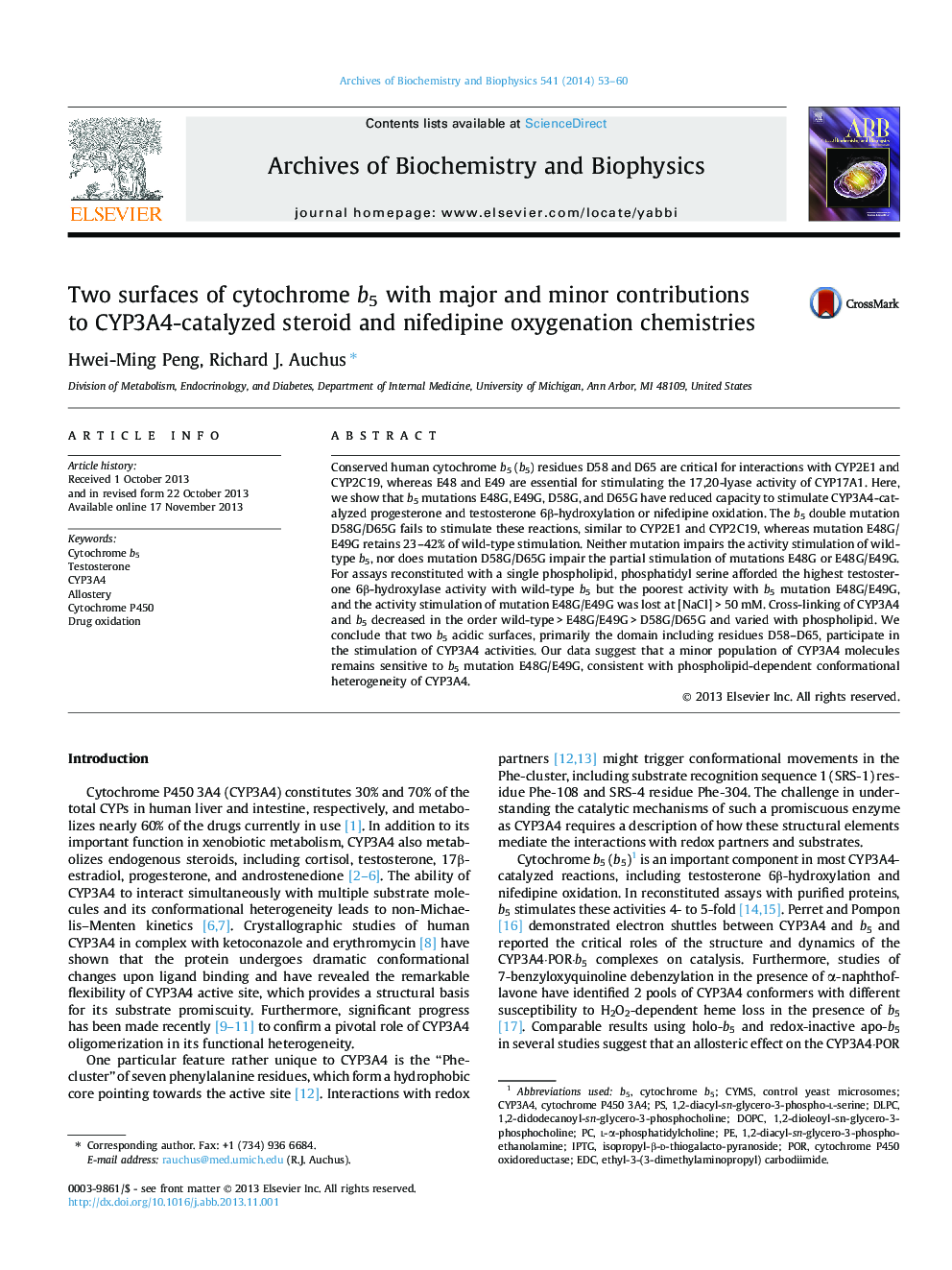| Article ID | Journal | Published Year | Pages | File Type |
|---|---|---|---|---|
| 1925285 | Archives of Biochemistry and Biophysics | 2014 | 8 Pages |
•Cytochrome b5 residues D58 and D65 are required to stimulate CYP3A4 activities.•Cytochrome b5 double-mutation E48G/E49G retains partial activity with CYP3A4.•The magnitude of stimulation by b5 mutation E48G/E49G varies with phospholipid.•Our data suggest two phospholipid-dependent populations of CYP3A4.
Conserved human cytochrome b5 (b5) residues D58 and D65 are critical for interactions with CYP2E1 and CYP2C19, whereas E48 and E49 are essential for stimulating the 17,20-lyase activity of CYP17A1. Here, we show that b5 mutations E48G, E49G, D58G, and D65G have reduced capacity to stimulate CYP3A4-catalyzed progesterone and testosterone 6β-hydroxylation or nifedipine oxidation. The b5 double mutation D58G/D65G fails to stimulate these reactions, similar to CYP2E1 and CYP2C19, whereas mutation E48G/E49G retains 23–42% of wild-type stimulation. Neither mutation impairs the activity stimulation of wild-type b5, nor does mutation D58G/D65G impair the partial stimulation of mutations E48G or E48G/E49G. For assays reconstituted with a single phospholipid, phosphatidyl serine afforded the highest testosterone 6β-hydroxylase activity with wild-type b5 but the poorest activity with b5 mutation E48G/E49G, and the activity stimulation of mutation E48G/E49G was lost at [NaCl] > 50 mM. Cross-linking of CYP3A4 and b5 decreased in the order wild-type > E48G/E49G > D58G/D65G and varied with phospholipid. We conclude that two b5 acidic surfaces, primarily the domain including residues D58–D65, participate in the stimulation of CYP3A4 activities. Our data suggest that a minor population of CYP3A4 molecules remains sensitive to b5 mutation E48G/E49G, consistent with phospholipid-dependent conformational heterogeneity of CYP3A4.
Graphical abstractFigure optionsDownload full-size imageDownload high-quality image (152 K)Download as PowerPoint slide
